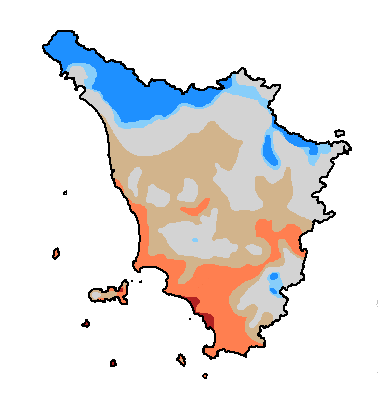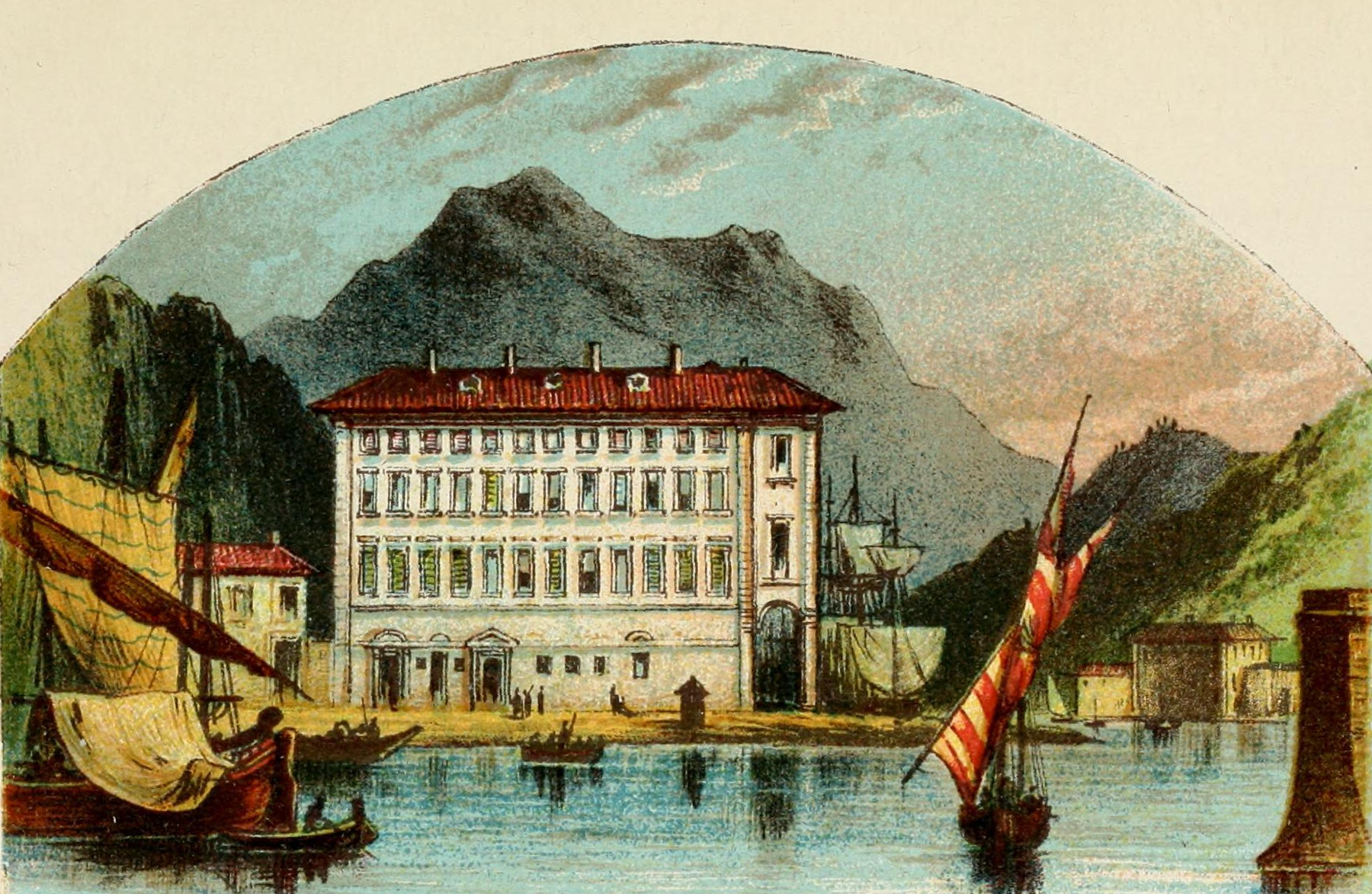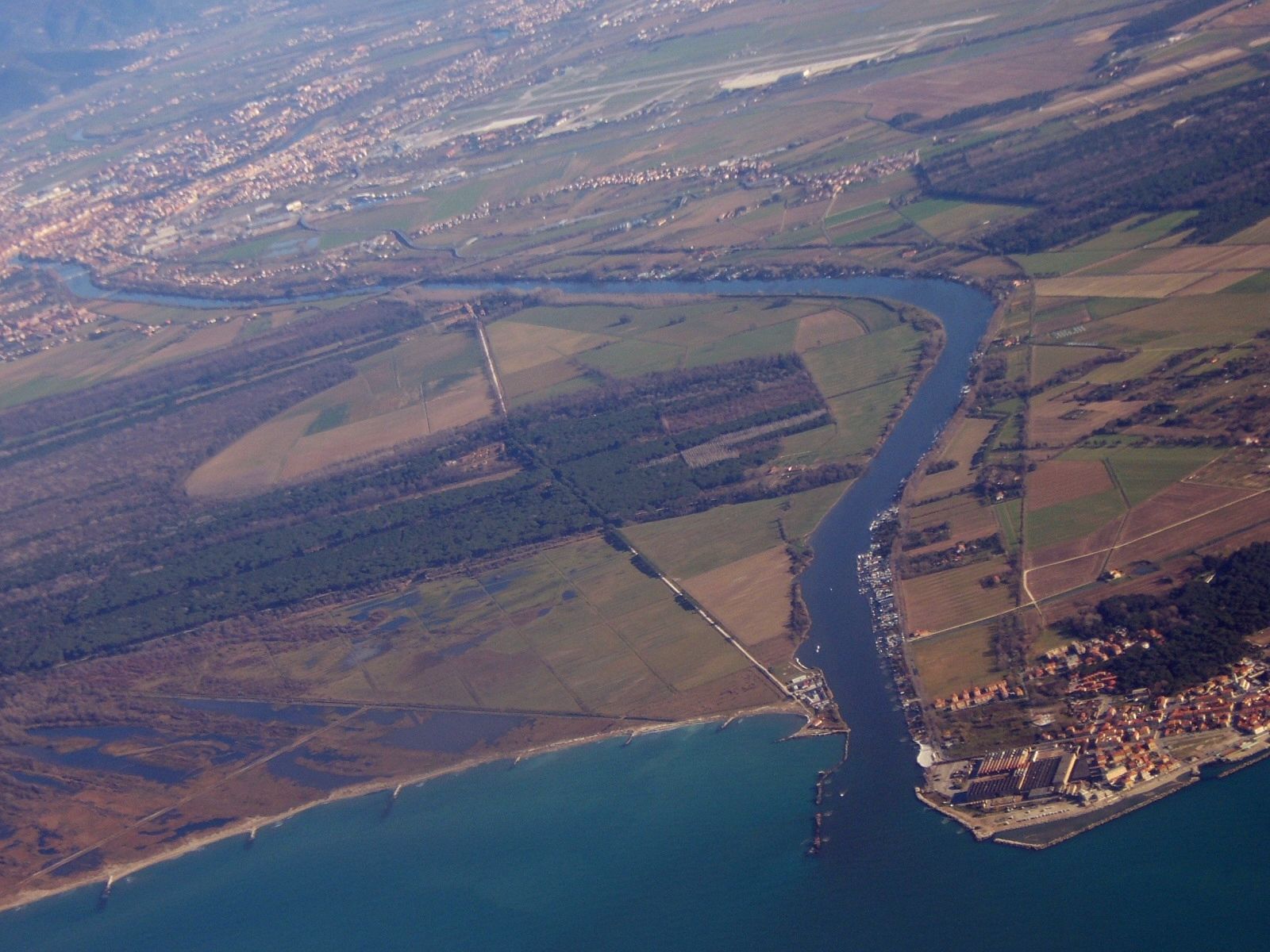|
San Dalmazio (Pomarance)
San Dalmazio is a ''frazione'' of the ''comune'' of Pomarance, in Tuscany, Province of Pisa, in central Italy. History San Dalmazio was built around a castle of the 19th century, but the name of the community is known from historical documents dating to around 1040, as a village dependent on the monastery of San Pietro in Palazzuolo. In 1147 a monastery of Order of Saint Benedict, Benedictine nuns was founded on its territory; this was destroyed by fire in 1438. Pope Eugene IV granted indulgences to help the reconstruction of the monastery, but in 1511, the sisters moved to Volterra. The village lost self-government in 1776 when it was absorbed by Pomarance. Monuments * A church of the sixteenth century, attributed to Bartolomeo Ammannati. * Two Oratory (worship), oratories, one of the Rosminians, Institute of Charity and the other of Domninus of Fidenza, Saint Donnino. In this second there's a nail (called of San Donnino) considered miraculous for illnesses. * Casa Serafin ... [...More Info...] [...Related Items...] OR: [Wikipedia] [Google] [Baidu] |
Tuscany
it, Toscano (man) it, Toscana (woman) , population_note = , population_blank1_title = , population_blank1 = , demographics_type1 = Citizenship , demographics1_footnotes = , demographics1_title1 = Italian , demographics1_info1 = 90% , demographics1_title2 = , demographics1_info2 = , demographics1_title3 = , demographics1_info3 = , timezone1 = CET , utc_offset1 = +1 , timezone1_DST = CEST , utc_offset1_DST = +2 , postal_code_type = , postal_code = , area_code_type = ISO 3166 code , area_code = IT-52 , blank_name_sec1 = GDP (nominal) , blank_info_sec1 = €118 billion (2018) , blank1_name_sec1 = GDP per capita , blank1_info_sec1 = €31,500 (2018) , blank2_name_sec1 = HDI (2019) , blank2_info_sec1 = 0.907 • 6th of 21 , blank_name_sec2 = NUTS Region , blank_info_sec2 ... [...More Info...] [...Related Items...] OR: [Wikipedia] [Google] [Baidu] |
Rosminians
The Rosminians, officially named the Institute of Charity ( la, Institutum Caritatis), abbreviated I.C., are a Roman Catholic clerical religious congregation of Pontifical Right for men founded by Antonio Rosmini and first organised in 1828. The order was formally approved by the Holy See in 1838, and took its name from "charity" as the fullness of Christian virtue. Its members are commonly called Fathers of Charity and use the postnominal letters IC. Foundation Antonio Rosmini-Serbati (1797-1855), also known as Antonio Rosmini, an Italian from Rovereto in the Austrian Tyrol, ordained in 1821. His two life-principles, written down at this time were: First, to apply himself to correct his faults and purify his soul by prayer and living a life as close to the teaching of Christ as possible. Second, to accept any opportunity to do charitable work. This principle was soon put to the test when the Marchioness di Canossa asked him to establish an institute for the education of poo ... [...More Info...] [...Related Items...] OR: [Wikipedia] [Google] [Baidu] |
Frank J
Frank or Franks may refer to: People * Frank (given name) * Frank (surname) * Franks (surname) * Franks, a medieval Germanic people * Frank, a term in the Muslim world for all western Europeans, particularly during the Crusades - see Farang Currency * Liechtenstein franc or frank, the currency of Liechtenstein since 1920 * Swiss franc or frank, the currency of Switzerland since 1850 * Westphalian frank, currency of the Kingdom of Westphalia between 1808 and 1813 * The currencies of the German-speaking cantons of Switzerland (1803–1814): ** Appenzell frank ** Argovia frank ** Basel frank ** Berne frank ** Fribourg frank ** Glarus frank ** Graubünden frank ** Luzern frank ** Schaffhausen frank ** Schwyz frank ** Solothurn frank ** St. Gallen frank ** Thurgau frank ** Unterwalden frank ** Uri frank ** Zürich frank Places * Frank, Alberta, Canada, an urban community, formerly a village * Franks, Illinois, United States, an unincorporated community * Franks, ... [...More Info...] [...Related Items...] OR: [Wikipedia] [Google] [Baidu] |
Simon & Schuster
Simon & Schuster () is an American publishing company and a subsidiary of Paramount Global. It was founded in New York City on January 2, 1924 by Richard L. Simon and M. Lincoln Schuster. As of 2016, Simon & Schuster was the third largest publisher in the United States, publishing 2,000 titles annually under 35 different imprints. History Early years In 1924, Richard Simon's aunt, a crossword puzzle enthusiast, asked whether there was a book of '' New York World'' crossword puzzles, which were very popular at the time. After discovering that none had been published, Simon and Max Schuster decided to launch a company to exploit the opportunity.Frederick Lewis Allen, ''Only Yesterday: An Informal History of the 1920s'', p. 165. . At the time, Simon was a piano salesman and Schuster was editor of an automotive trade magazine. They pooled , equivalent to $ today, to start a company that published crossword puzzles. The new publishing house used "fad" publishing to publish ... [...More Info...] [...Related Items...] OR: [Wikipedia] [Google] [Baidu] |
Roy P
Roy is a masculine given name and a family surname with varied origin. In Anglo-Norman England, the name derived from the Norman ''roy'', meaning "king", while its Old French cognate, ''rey'' or ''roy'' (modern ''roi''), likewise gave rise to Roy as a variant in the Francophone world. In India, Roy is a variant of the surname '' Rai'',. likewise meaning "king".. It also arose independently in Scotland, an anglicisation from the Scottish Gaelic nickname ''ruadh'', meaning "red". Given name * Roy Acuff (1903–1992), American country music singer and fiddler * Roy Andersen (born 1955), runner * Roy Andersen (South Africa) (born 1948), South African businessman and military officer * Roy Anderson (American football) (born 1980), American football coach * Sir Roy M. Anderson (born 1947), British scientific adviser * Roy Andersson (born 1943), Swedish film director * Roy Andersson (footballer) (born 1949), footballer from Sweden * Roy Chapman Andrews (1884–1960), American ... [...More Info...] [...Related Items...] OR: [Wikipedia] [Google] [Baidu] |
Princeton University Press
Princeton University Press is an independent Academic publishing, publisher with close connections to Princeton University. Its mission is to disseminate scholarship within academia and society at large. The press was founded by Whitney Darrow, with the financial support of Charles Scribner II, Charles Scribner, as a printing press to serve the Princeton community in 1905. Its distinctive building was constructed in 1911 on William Street in Princeton. Its first book was a new 1912 edition of John Witherspoon's ''Lectures on Moral Philosophy.'' History Princeton University Press was founded in 1905 by a recent Princeton graduate, Whitney Darrow, with financial support from another Princetonian, Charles Scribner II. Darrow and Scribner purchased the equipment and assumed the operations of two already existing local publishers, that of the ''Princeton Alumni Weekly'' and the Princeton Press. The new press printed both local newspapers, university documents, ''The Daily Princetonian ... [...More Info...] [...Related Items...] OR: [Wikipedia] [Google] [Baidu] |
Giuseppe Garibaldi
Giuseppe Maria Garibaldi ( , ;In his native Ligurian language, he is known as ''Gioxeppe Gaibado''. In his particular Niçard dialect of Ligurian, he was known as ''Jousé'' or ''Josep''. 4 July 1807 – 2 June 1882) was an Italian general, patriot, revolutionary and republican. He contributed to Italian unification and the creation of the Kingdom of Italy. He is considered one of the greatest generals of modern times and one of Italy's " fathers of the fatherland", along with Camillo Benso, Count of Cavour, Victor Emmanuel II of Italy and Giuseppe Mazzini. Garibaldi is also known as the "''Hero of the Two Worlds''" because of his military enterprises in South America and Europe. Garibaldi was a follower of the Italian nationalist Mazzini and embraced the republican nationalism of the Young Italy movement. He became a supporter of Italian unification under a democratic republican government. However, breaking with Mazzini, he pragmatically allied himself with the monarc ... [...More Info...] [...Related Items...] OR: [Wikipedia] [Google] [Baidu] |
Domninus Of Fidenza
Saint Domninus of Fidenza ( it, San Donnino di Fidenza) is an Italian Catholic saint. According to tradition, he died in 304 AD and was a native of Parma. The cathedral at Fidenza (a town once called ''Borgo San Donnino'') is dedicated to him. The '' Hieronymian Martyrology'' commemorates Domninus, but does not include any further information about him, and his feast day is cited as occurring on October 9. He is not commemorated in the martyrologies of Bede, Ado, Notker, or the ''Parvum Romanum''. His legend states that Domninus was Chamberlain to Emperor Maximian and keeper of the royal crown, and converted to Christianity, thereby incurring the emperor's wrath. Pursued by imperial forces, he rode through Piacenza holding a cross. He was caught and beheaded on the banks of the Stirone, outside of Fidenza, or the Via Aemilia. It is recounted that Domninus picked up his severed head and placed it on the future site of the cathedral of San Donnino. Veneration His reli ... [...More Info...] [...Related Items...] OR: [Wikipedia] [Google] [Baidu] |
Oratory (worship)
In the canon law of the Catholic Church, an oratory is a place which is set aside by permission of an ordinary for divine worship, for the convenience of some community or group of the faithful who assemble there, but to which other members of the faithful may have access with the consent of the competent superior. The word ''oratory'' comes from the Latin verb ''orare'', to pray. History Oratories seem to have been developed in chapels built at the shrines of martyrs, for the faithful to assemble and pray on the spot. The oldest extant oratory is the Archiepiscopal Chapel in Ravenna (). The term is often used for very small structures surviving from the first millennium, especially in areas where the monasticism of Celtic Christianity was dominant; in these cases it may represent an archaeological guess as to function, in the absence of better evidence. Public, semi-public, private Previously, canon law distinguished several types of oratories: private (with use restricted t ... [...More Info...] [...Related Items...] OR: [Wikipedia] [Google] [Baidu] |
Province Of Pisa
The province of Pisa ( it, provincia di Pisa) is a province in the Tuscany region of central Italy. Its capital is the city of Pisa. With an area of and a total population of 421,642 (), it is the second most populous and fifth largest province of Tuscany. It is subdivided into 37 ''comuni''. With a history that dates to the Etruscans and Phoenicians, the province achieved considerable power and influence in the Mediterranean in the 12th and 13th centuries. Pisa, the provincial capital, is known for its Leaning Tower, and other historic landmarks that attract tourists. History The area has a long maritime history dating back to the Etruscans, the Phoenicians and the Gauls. Under the Roman Empire, it was responsible for naval battles against the Ligurians, Gauls and Carthaginians, becoming a Roman colony in 180 B.C. and gaining further colonial independence under Julius Caesar. Thanks to its complex river system, with the fall of the Roman Empire, Pisa did not suffer unduly and w ... [...More Info...] [...Related Items...] OR: [Wikipedia] [Google] [Baidu] |
Bartolomeo Ammannati
Bartolomeo Ammannati (18 June 151113 April 1592) was an Italian architect and sculptor, born at Settignano, near Florence. He studied under Baccio Bandinelli and Jacopo Sansovino (assisting on the design of the Library of St. Mark's, the '' Biblioteca Marciana'', Venice) and closely imitated the style of Michelangelo. He was more distinguished in architecture than in sculpture. He worked in Rome in collaboration with Vignola and Vasari), including designs for the Villa Giulia, but also for works and at Lucca. He labored during 1558–1570, in the refurbishment and enlargement of Pitti Palace, creating the courtyard consisting of three wings with rusticated facades, and one lower portico leading to the amphitheatre in the Boboli Gardens. His design mirrored the appearance of the main external façade of Pitti. He was also named ''Consul'' of Accademia delle Arti del Disegno of Florence, which had been founded by the Duke Cosimo I in 1563. In 1569, Ammanati was commissio ... [...More Info...] [...Related Items...] OR: [Wikipedia] [Google] [Baidu] |
Volterra
Volterra (; Latin: ''Volaterrae'') is a walled mountaintop town in the Tuscany region of Italy. Its history dates from before the 8th century BC and it has substantial structures from the Etruscan, Roman, and Medieval periods. History Volterra, known to the ancient Etruscans as ''Velathri'' or ''Vlathri'' and to the Romans as ''Volaterrae'', is a town and ''comune'' in the Tuscany region of Italy. The town was a Bronze Age settlement of the Proto-Villanovan culture, and an important Etruscan center (''Velàthre'', ''Velathri'' or ''Felathri'' in Etruscan, ''Volaterrae'' in Latin language), one of the "twelve cities" of the Etruscan League. The site is believed to have been continuously inhabited as a city since at least the end of the 8th century BC. It became a municipium allied to Rome at the end of the 3rd century BC. The city was a bishop's residence in the 5th century, and its episcopal power was affirmed during the 12th century. With the decline of the episcopate an ... [...More Info...] [...Related Items...] OR: [Wikipedia] [Google] [Baidu] |





_left.jpg)
